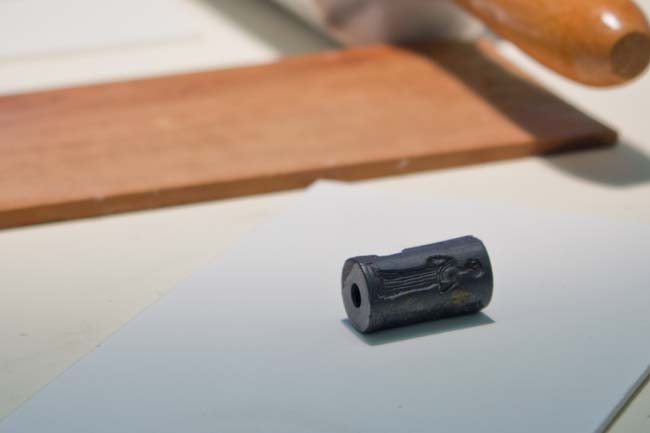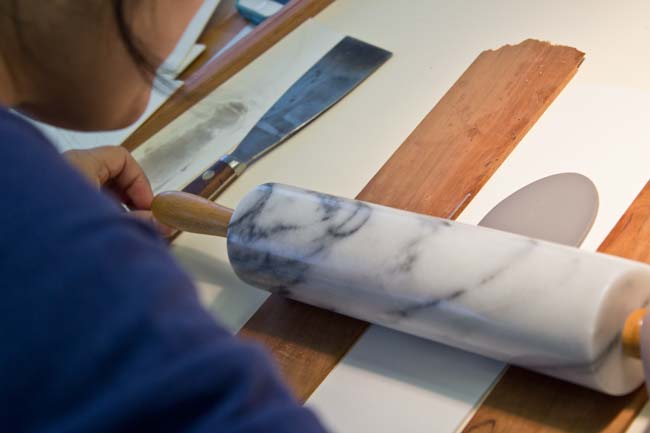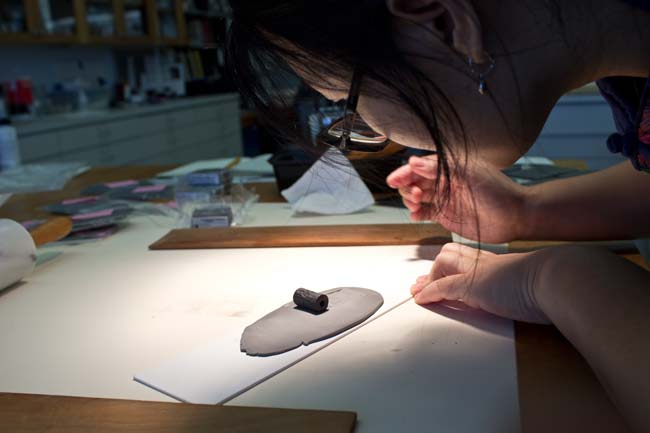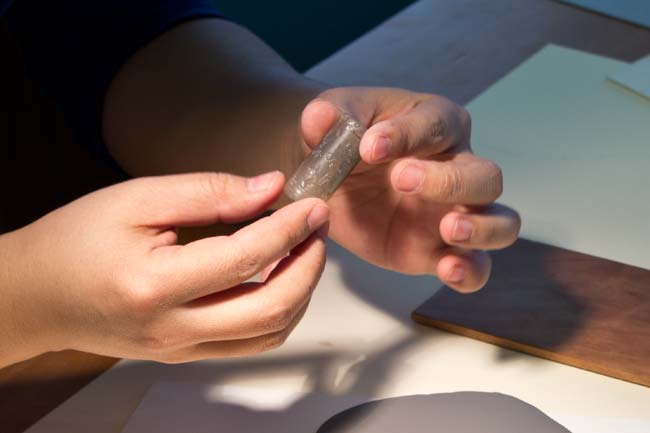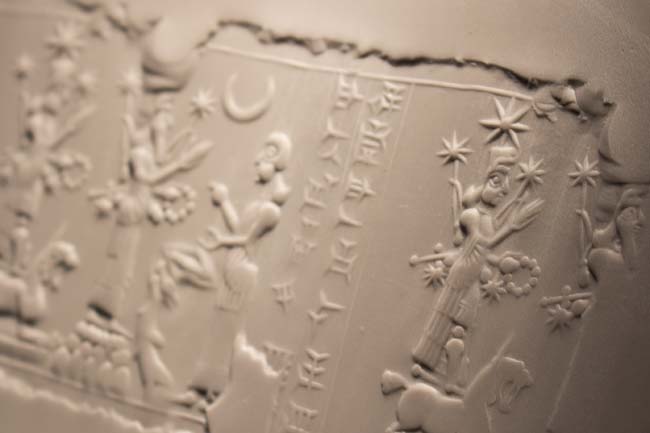The goddess Ishtar in a ruffled gown wields a sword and two star-tipped bows while posed on a lion’s back. She is behind a bearded diety, also with sword and arrows, high atop a mountain. A worshipper stands before these two astral deities under the light of a crescent moon. An inscription reads “Belonging to Ubashi . . ., eunuch of Piqitti-ilima.”
This intricately detailed scene slowly revealed itself as Yan Jia, PhD candidate in the Department of History of Art and Architecture, pushed a small stone cylinder, not much larger than 1” in height, across a clay surface to imprint its carved image. Curators in the Division of Asian and Mediterranean Art asked Jia to create sealings for 15 seals in our collections. Her work will be displayed alongside the ancient seals in an installation at the new Harvard Art Museums, opening this fall.
As Jia leaned heavily into the marble rolling pin to create a perfectly smooth surface for imprinting the seals, you could see the care and respect she has for this ancient practice. The creation of sealings dates back as early as 6,500 BCE in the ancient Near East. A means of placing one’s mark on important documents, stamp seals and cylinder seals—which can be rolled to create a continuous frieze-like impression—are typically carved in stone, but can be seen in other hard materials, such as shell or bone. They depict combat scenes, banquets, and ritual ceremonies and are small enough to be worn as amulets (as they often were).
Jia was thrilled to have the opportunity to handle these objects and contribute to the gallery installation. In turn, the museums are grateful for her work, which will greatly enhance the installation. During the experience, Jia remembered a quote that her academic advisor, Professor Irene Winter, once cited from Carl Nylander’s 1964 book The Deep Well: people usually find in the art of the ancient Near East “not the music, but the flute . . . not the grief, but the grave.” Jia added, “When I roll the cylinder seals on lumps of clay, just the way that these particular instruments were handled and used thousands of years ago and witness the beauty as their impressions start to appear and expand, I do feel the materials are singing to me. It is one of the most joyful moments that I shared with these ancient artifacts.”
